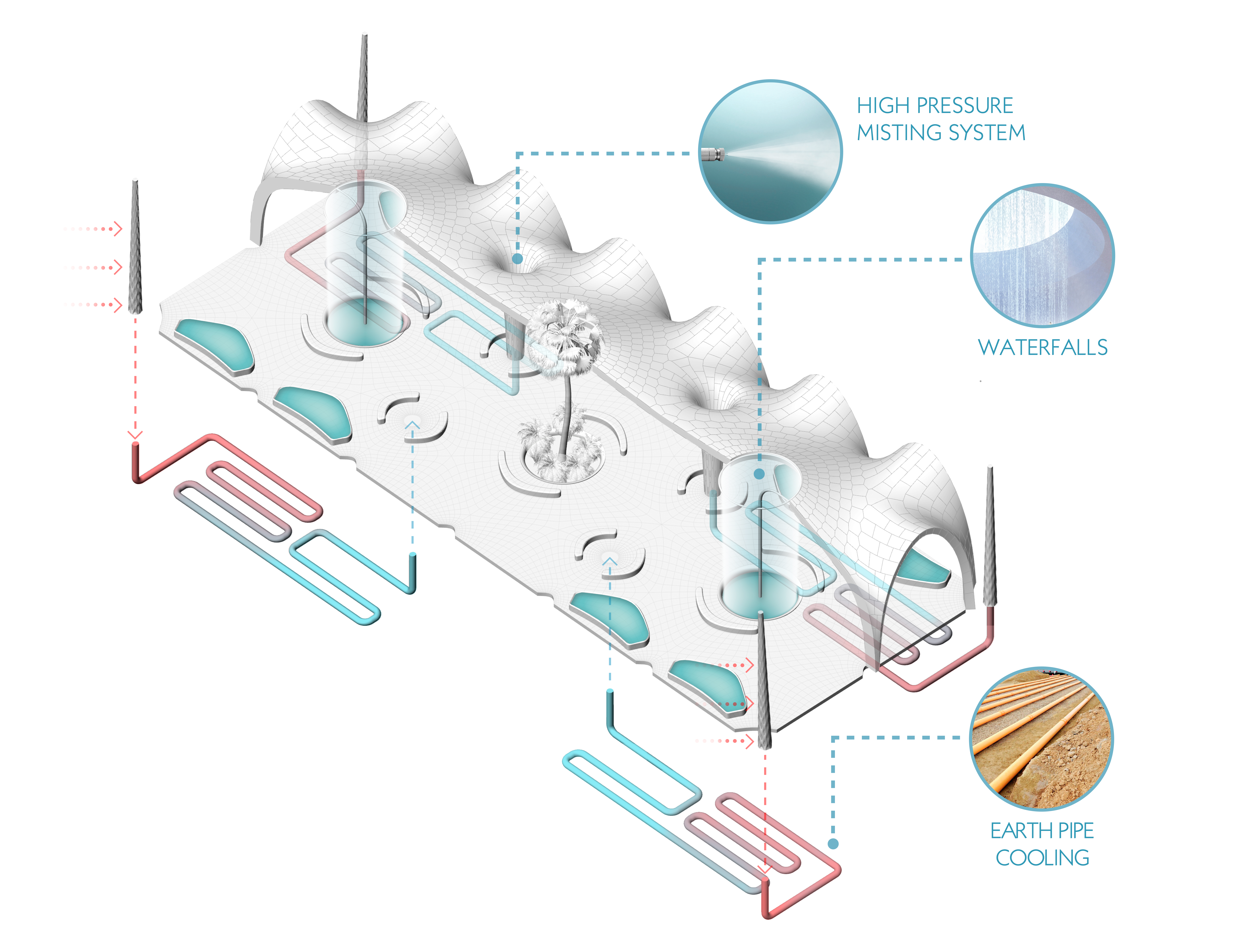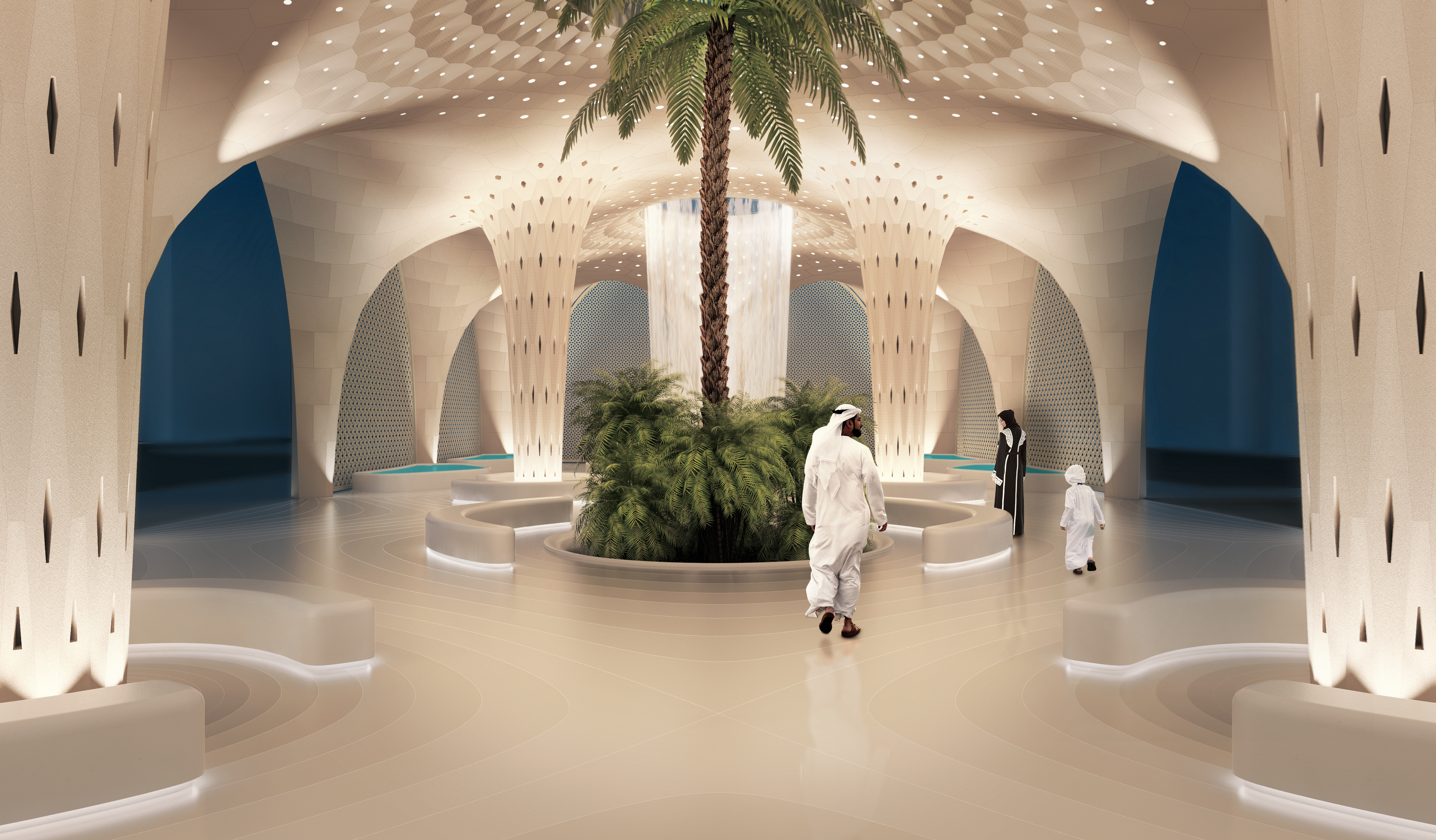Italian design firm Barberio Colella Architetti and architect Angelo Figliola have proposed a project called Urban Dunes to help manage the extreme climate in Abu Dhabi. Figliola will work alongside Barberio Colella Architetti to 3D print a sustainable urban bioclimatic shell in Abu Dhabi, using binder jet technology.
The project’s ultimate aim is to lift a thick layer of sand to create an urban ‘oasis’ through artificial dunes. The Urban Dunes will use cost-effective passive cooling and low-tech active systems that require minimal energy, keeping the interiors cool without wasting resources.
The process of building the Urban Dunes
The design proposal of the Urban Dunes is rooted in the admiration, and awareness Barberio Colella Architetti and Figliola have of the climatic context of Abu Dhabi and Emirates’ traditional architecture. In the proposal, the arched ceiling is composed of several stereotomic blocks formed by stacking heavy-weight units on top of each other. The blocks themselves are binder jetted out of sandstone using Abu Dhabi’s local sand as raw material.
The ‘Cool Abu Dhabi Challenge’ competition gave Barberio Colella Architetti and Figliola an honorable mention. Abu Dhabi City Department of Transportation promotes the contest, which focuses on cooling urban spaces in a practical but sustainable way.

Using 3D printing to combat the Earth’s temperature
The application of a 55cm thick 3D printed arched roof will prevent the urban space from overheating with its high thermal mass. Environmental analysis on the sand vault’s vernacular sun shading device also showed that it could protect and shade the Urban Dune adequately. Additionally, the space under the shell is actively ventilated by a low-tech HVAC system, a cost-effective alternative to battery-powered systems.
The sand itself will be mixed with heat-reflecting cooling pigments capable of increasing the surface’s reflectance, reducing the accumulation of surface heat. The vault temperature is further lowered with a series of small earth pipes that flow cooling fluids inside the shell’s walls.
The constant temperature of the earth underneath, which is approximately 14°C, will also play a part in passively cooling the structures. The systems will work in conjunction with each other to achieve a relatively cool universal thermal climate index (UTCI) of 26°C in August, the warmest month in Abu Dhabi.

Sustainable 3D printing in construction and beyond
This month, Italian 3D printer manufacturer WASP partnered with Rossana Orlandi gallery in Milan to showcase the Gaia, a 3D printed eco-house created with sustainable materials.
Gaia was manufactured using the firm’s CRANE WASP 3D printer, with soil as the primary printing material. The building’s casing was printed in around ten days and is composed of a 20 square meter wall with a thickness of 40cm. Gaia was designed to integrate natural ventilation systems and thermoacoustic insulation systems, with WASP claiming the bio-building has minimal environmental impact and the potential to be hugely scalable.
Elsewhere in Abu Dhabi, MRO service provider Etihad Engineering teamed up with German 3D printer manufacturers EOS and BigRep to open an additive manufacturing facility in Abu Dhabi. The collaboration yielded the region’s first 3D printing lab with approval from the European Aviation Safety Agency (EASA) to produce aircraft parts using powder-bed fusion technology.
Check us out on Twitter and Facebook for more updates! Don’t forget to subscribe to the 3D Printing Industry newsletter to keep up-to-date with the latest 3D printing news.
Are you looking for a job in the additive manufacturing industry? Visit 3D Printing Jobs for a selection of roles in the additive manufacturing industry.
Feature image shows the sand dunes during the day. Photo via Barberio Colella Architetti.


